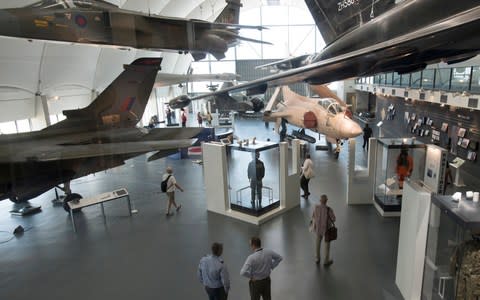Prisoner of War suit from Gulf War to go on display for first time

A never seen before Prisoner of War suit from the Gulf War is to go on display at the RAF museum as part of a major renovation to mark a century in of the force's time in service.
The suit “which embodies the spirit of the RAF” was donated to the museum by Squadron Leader Robbie Stewart, a navigator who was shot down with his pilot by a surface-to-air missile during a low-level night attack whilst flying in Iraq.
They were captured by Iraqi forces and badly beaten during their interrogation and six week imprisonment.
Maggie Appleton, CEO of the museum, said: “The suit is a very powerful and moving statement to make of RAF friendship and humanity that really does embody the spirit of the Royal Airforce.
“When we show it to people It is that pause, it’s a really moving object. It has quite a presence in there I think. You can see the story but you can hear the story as well from him and his colleagues.”
Set to open on Saturday, the museum also features three new exhibitions, with one titled The RAF in an Age of Uncertainty, reflecting the rapid economic and political change from 1980 to present day.
The museum has undergone a £26 million refurbishment, creating an interactive experience of the RAF’s century-long story with a transformed layout, three new exhibitions, an exclusive ‘Gnat’ flight simulator and a model of the primed F-35 Lightning jet.

Another focuses on the future of the RAF, with the US Air Force Predator drone on display alongside a debate table encouraging visitors to discuss the future of air and space security and how the RAF is adapting.
Ms Appleton added: “The RAF is absolutely diverse in welcoming airmen and airwomen totally and utterly, and all different backgrounds and trades are all recognised.
“That’s why we don’t have an exhibition about women in the RAF because women are part of that broader RAF story, they are actually integrated into every RAF storyline. It’s a diverse and integrated story.”
A 1930s doll of airwoman Amy Johnson is on display, showing how pioneering she was at the time, among other artefacts including sand from the Stalag Luft III, the site of the Great Escape.
The new museum also illuminates the story of Noel Kahn, who despite being from a family of suffering Muslim pacifists, flew to Nazi-occupied Paris to begin a career in covert RAF operations.

A famous Sea King helicopters, flown by Prince William at RAF Valley, is also a new addition to the museum.
Sir Peter Luff, the Chair of the Fund, said: “As a pioneer and leader of international aviation, and in its Centenary year, the Royal Air Force deserves a world-class museum.
“Now, thanks to National Lottery players, visitors can explore the powerful, inspiring and often surprising stories of the world’s oldest independent air force in a dynamic new setting.”
Sir Roger Carr, chairman BAE Systems, said: “The histories of the Royal Air Force and BAE Systems have been inextricably linked since the foundation of the Royal Flying Corps.
“Since 2014 we are proud to have been a Founding Partner for the regeneration of the RAF Museum. The Museum plays an important role inspiring the next generation of airmen, airwomen and engineers."

 Yahoo News
Yahoo News 
